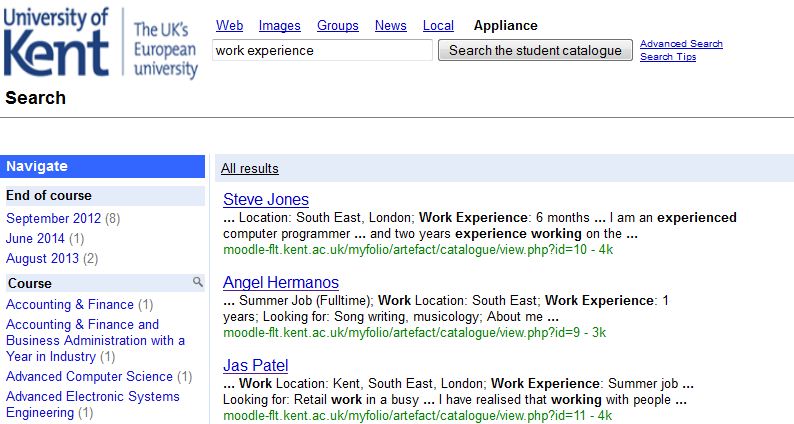 There has been a sudden boost in activity on the EAT-PDP project over the last couple of weeks as we brought on board developers to help design and build the Student Employability catalogue. First a note on the name. We have, since the beginning of the project, referred to this particular tool as the Employability Catalogue but now think this may be too narrow a term. Many users of the catalogue will be either hoping to find employment or hoping to find an employee but there could be other users too. Some users may be interested in mentoring and use the catalogue to identify mentees. Prospective students might be interested in seeing ‘the final product’ from the university. So we are currently using the term Student Catalogue.
There has been a sudden boost in activity on the EAT-PDP project over the last couple of weeks as we brought on board developers to help design and build the Student Employability catalogue. First a note on the name. We have, since the beginning of the project, referred to this particular tool as the Employability Catalogue but now think this may be too narrow a term. Many users of the catalogue will be either hoping to find employment or hoping to find an employee but there could be other users too. Some users may be interested in mentoring and use the catalogue to identify mentees. Prospective students might be interested in seeing ‘the final product’ from the university. So we are currently using the term Student Catalogue.
So what is the Student Catalogue? An opt-in service within Myfolio/Mahara which allows students and alumni to create an indexed, searchable webpage showcasing their achievements, promoting their strengths and detailing their interests. As detailed in previous blogs – and most likely in future blogs – the logistics of introducing this service are complex but this technical sprint focuses on actually getting the service to work and start designing the user interface.
Kent is using the Google Search Appliance at the core of this service. The source data is provided by Myfolio users in the form of a webpage which uses a widget to seed information. We think this service will work best is there is some consistency in the data users supply – course details, date available, work experience, location etc. The user can then add other information – blogs, free text, images etc using the established Mahara drag and drop functionality and of course re-use previously created artefacts. After consent is confirmed, this data is indexed by our Google Search Appliance. The Student Catalogue search page has a Google like interface and will produce faceted results.
Progress was held up by the lack of detailed documentation available on developing Mahara. It feels a bit mean criticising Open Source but the documentation of Mahara.org is pretty sparse beyond the user manual stuff – which is very good. I think it is generally acknowledged – though I know there are exceptions – that people who love coding don’t like writing manuals. I could write a whole blog on that subject, however….
By the end of the sprint our developers had produced a working prototype which we then demonstrated at the Kent Moodle and Learning Technology meeting. I am pleased to report, to general acclaim and approval. We are a long way off implementation and further tweaks to the interface are needed but the developers did a great job in delivering in the short amount of time available and without any useful documentation. A full description of the Student Catalogue and the developer experience will comprise one of the key outputs from the project.
